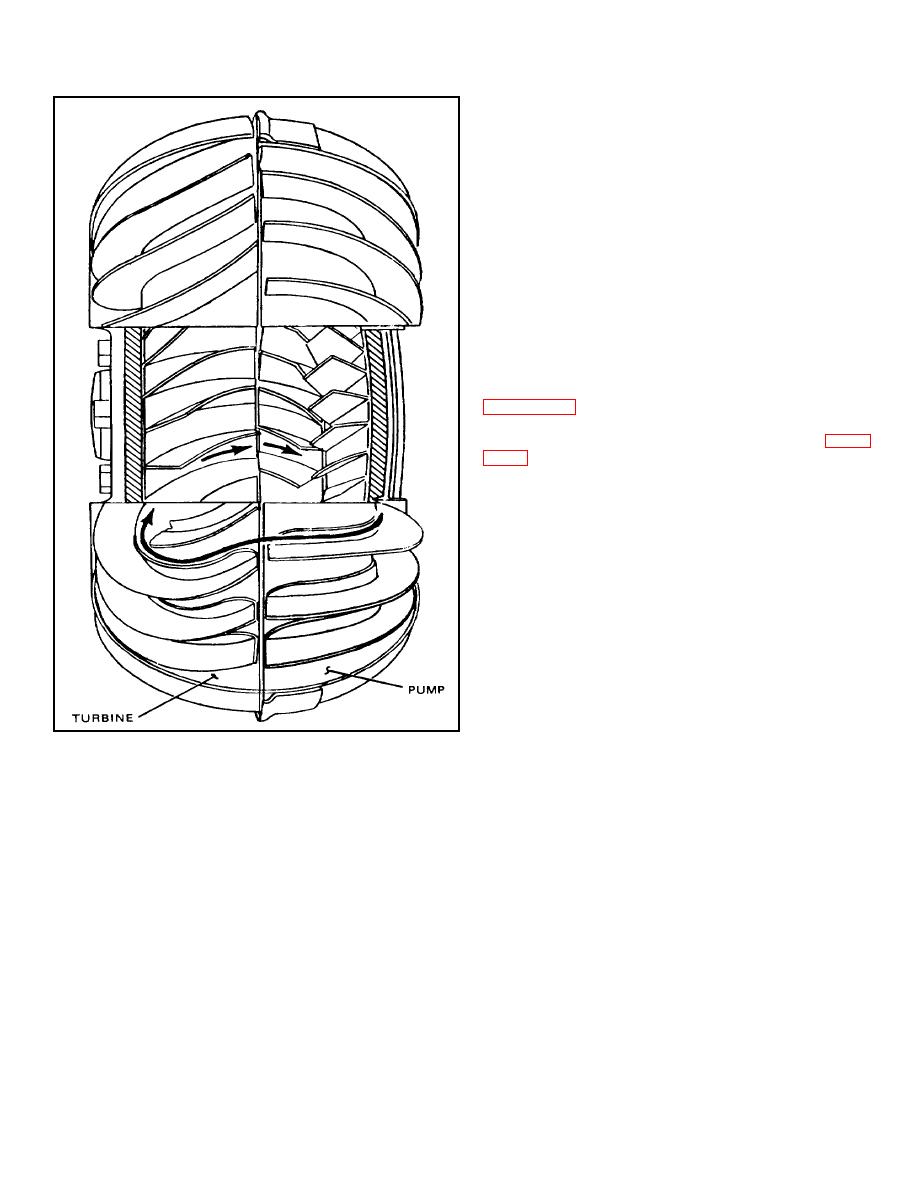
| Tweet |

Custom Search
|
|

|
||
 TM 9-8000
turbine Is rotating at very slow speed with the pump
rotating at high speed, the torque at the output shaft
(attached to turbine) may be several times the torque at
the input shaft (attached to the engine).
d. In actual operation, the secondary stator and primary
stator are stationary when there is a great difference
between pump and turbine speed. At the same time, the
secondary pump Is overrunning, or running faster than,
the primary pump; the secondary pump does not enter
into the converter action at all at this time. The secondary
pump Is mounted on a freewheeling or overrunning
clutch very similar to the overrunning clutch used in
automotive starters (para 23-7). The freewheeling clutch
permits the secondary pump to run freely in one
direction, but, when it attempts to slow down below shaft
speed, it locks on the shaft because the rollers jam
between the race and notches in the hub as shown in
turning slowly and the pump is turning rapidly, the
direction of oil flow is as shown by the arrows in figure
back sides of the secondary pump vanes, pushing the
secondary pump ahead so that it overruns. Under this
condition, the secondary pump vanes simply are moving
out of the way of the oil. The secondary pump enters the
action only when the pump and turbine are turning at
about the same speeds, as described below.
e. When the turbine speed Increases due to the
application of the torque, so that it turns at more nearly
the same speed as the pump, the oil leaves the turbine
vanes with less of the reverse direction of motion
mentioned above. Consequently, it begins to strike the
back sides of the secondary stator vanes so the
secondary stator now begins to overrun on its
overrunning clutch. It Is no longer needed, and therefore,
In effect, it moves out of the way by overrunning or
freewheeling.
Figure 21-17. Torque Converter Cutaway so
Curvature of Vanes and Oil Flow is Visible.
f. When turbine speed increases to nearly pump
where it picks up more energy of motion, and then back
speed, as when cruising at steady speed along the
into the turbine again, that produces the torque
highway, the oil leaves the turbine vanes with very little
multiplication. Each time the oil passes from the pump to
reverse direction of motion. The primary stator also
the turbine, it gives a push to the turbine. The oil still
begins to overrun because the oil begins to strike the
has energy of motion after it leaves the turbine and is
back sides of its vanes. At the same time, the oil begins
reversed in direction by the stators and secondary pump.
to strike the front
When it comes around to the turbine again, it gives more
of this push to the turbine. Repeated applications of this
TA233688
push Increases the total push so that, when the
21-16
|
||
 |
||